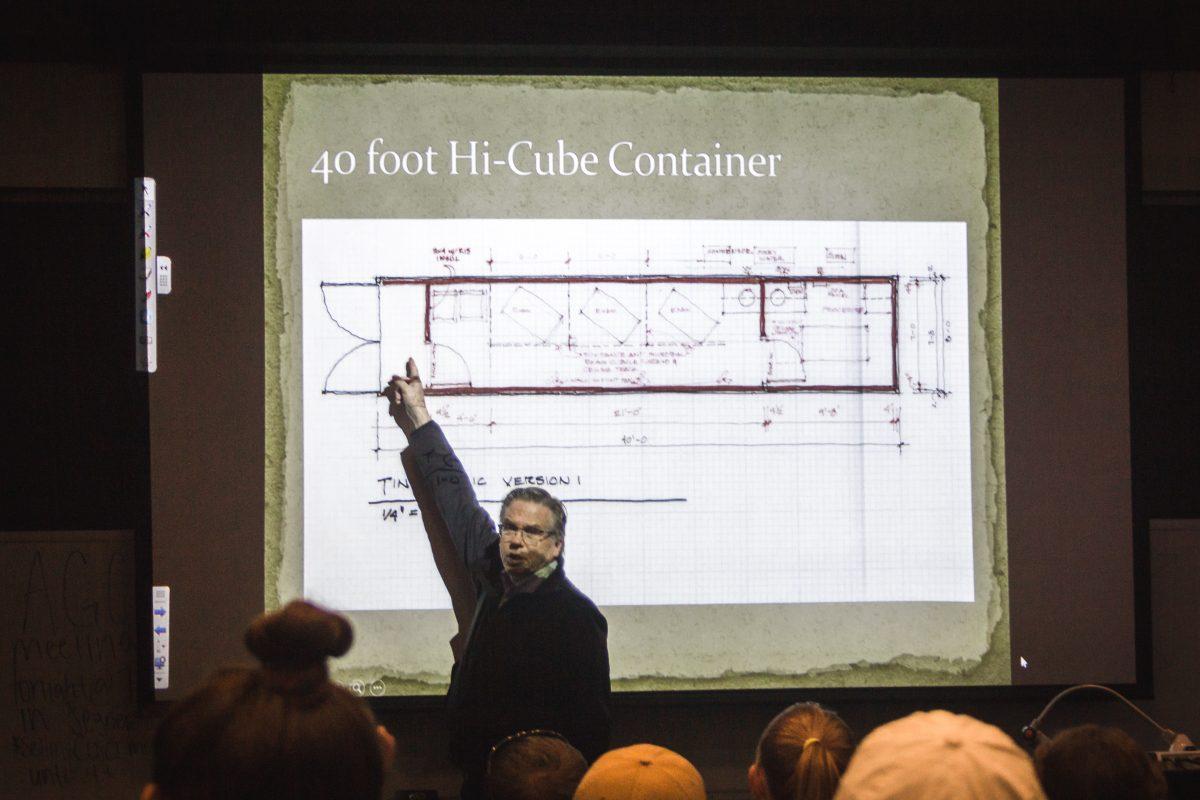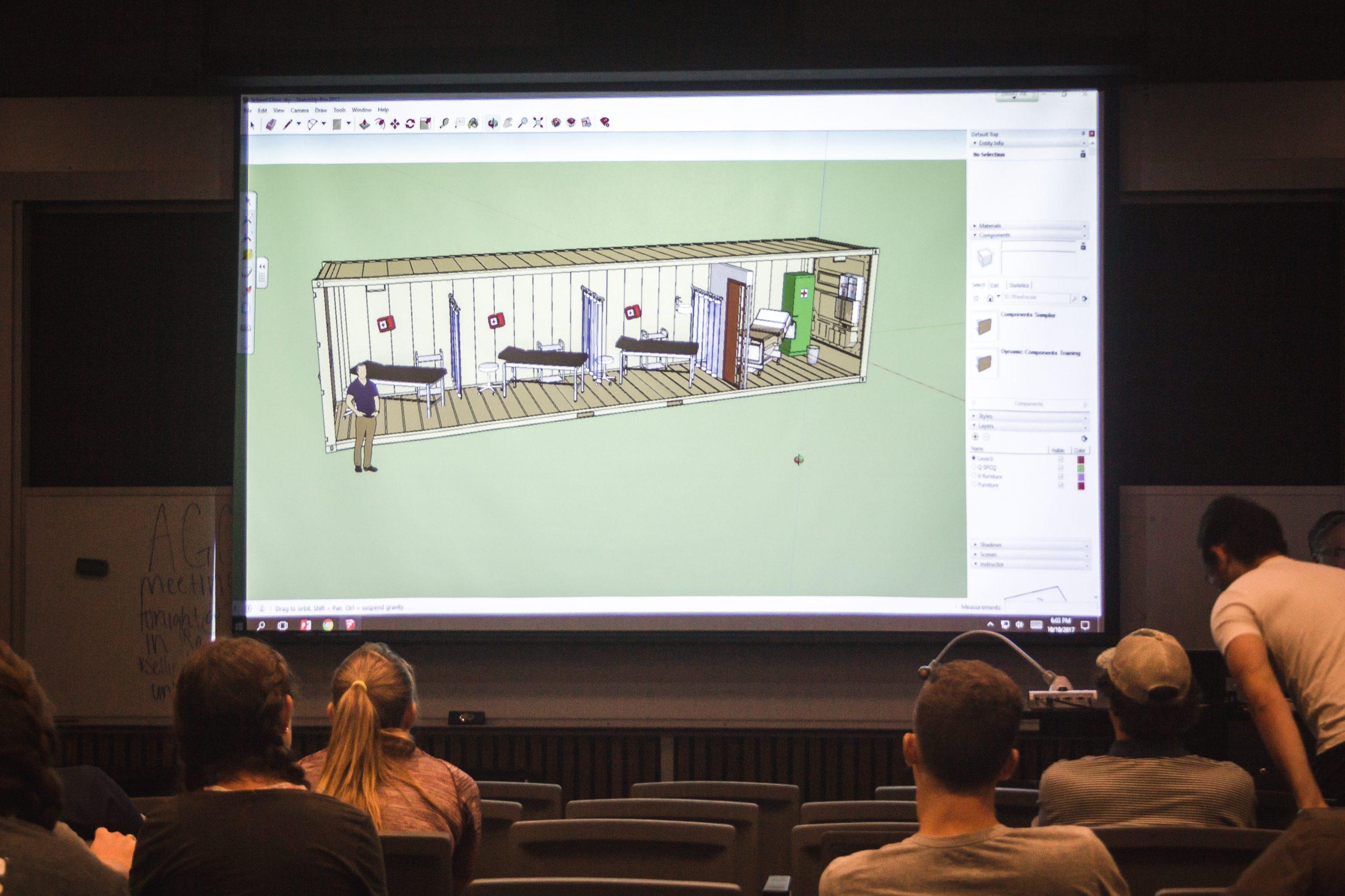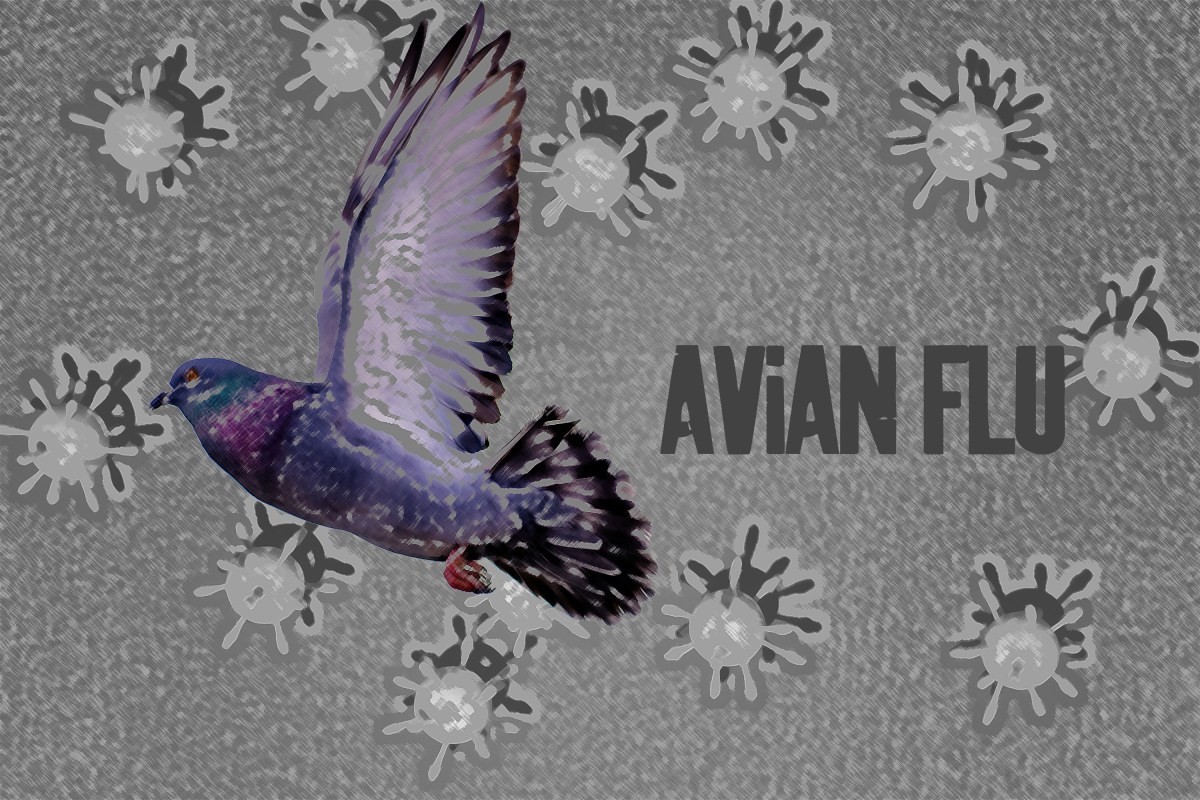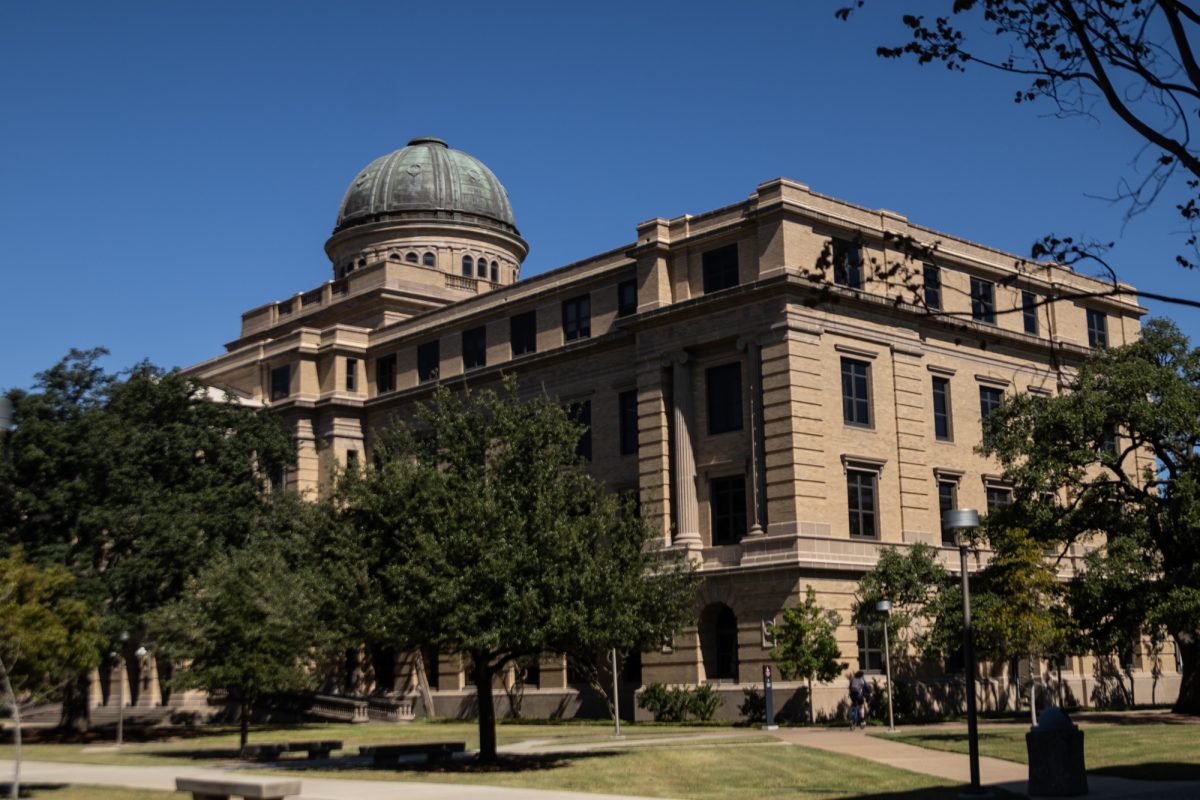Architecture, construction science and landscape students join expertise to transform shipping containers into medical clinics for impoverished school and communities.
Architecture and construction science students are preparing to create tiny clinics for both elementary schools in colonias areas, impoverished areas along the Texas border, and at off-grid remote locations. This project is interdisciplinary capstone project for construction science, architecture and landscape students.
Through their combined efforts, they will be able convert shipping containers into small clinics for children and adults. These shipping containers require a detailed plan before the actual building is constructed. Hence, the students must consider everything from water systems to heating/AC generators to budget control.
Making these decisions is not a task for one person or one department, it is a weekly discussion between the construction science and architecture students, said architecture professor Michael O’Brien.
“We enjoy the teaming environment instead of the [approach in which the] architect operates in a vacuum, gives the drawings to the construction manager, who operates then in a vacuum, who then gives a piece to the landscape architect who operates in a vacuum,” O’Brien said. “We are trying to make this more of a give and take process and I feel pretty good about the question today.”
This combined community service and interdisciplinary project has been going on for about four years now. For two years, they joined forces to build tiny homes for homeless veterans in Austin. Eric Bardenhagen, assistant professor in the Department of Landscape Architecture and Urban Planning, said after the tiny home project ended, the colleges wanted to continue with this program and continue to allow students to gain critical experience before they set out into the industry upon graduation.
“We are trying to keep that momentum of trying to keep the departments working together because that is what happens in industry,” Bardenhagen said. “You have to have this intense process of going back and forth, of answering questions and not knowing. We have to do that in the industry all the time.”
The most recent meeting that took place was to discuss the building of these clinics, provided a blueprint of the initial idea, which was created by the architects. They included a waiting area, three exam rooms and a procedure room. As a combined unit, they are all focusing on simple but functional structure. This will allow the clinic to be mobile, if needed, for movement in the remote locations.
As the ideas bounce from the architecture to the construction science students, they create new plans, improve and give suggestions on the standing plans. Despite the joined work, each department has their own specialties that they focus on in order to successfully create a functional product, Bardenhagen said.
“We have an overarching effort which is that we have a grant from the College of Architecture which helps us as groups to come together, so that we can have a interdisciplinary project with construction science doing the construction end or really the core work,” Bardenhagen said. “Then, architecture coming in and planing and then in the spring we will have a landscape architecture course that will do some construction on associating structures and things like that.”
One of the most significant issues surrounding these types of projects is funding. The tiny homes project was funded by grants with from the College of Architecture and these tiny clinics are funded by the construction science department.
“We did a lot of work for the tiny houses through grants that came through the College of Architecture and those aren’t endless either,” O’Brien said. “They have told us that we just can’t keep doing this if we don’t get anything back.”
Although funding remains to be an issue for the future projects, this current project has what it needs to continue serving the community and impacting the students and their education, in the best way possible.
Ian Taylor, construction science senior said this program has allowed him to gain skills he may have never been able to in any other class project.
“Working one-on-one with architects, which is what we will be doing when we graduate, so I think it’s a good experience,” Taylor said. “We don’t get that kind of experience, really, doing another project.”
Containers to clinics
October 16, 2017
Photo by Photo by Angelina Alcantar
Very detailed planning and thought has gone into the creation of the clinics.
0
Donate to The Battalion
$1065
$5000
Contributed
Our Goal
Your donation will support the student journalists of Texas A&M University - College Station. Your contribution will allow us to purchase equipment and cover our annual website hosting costs, in addition to paying freelance staffers for their work, travel costs for coverage and more!
More to Discover











